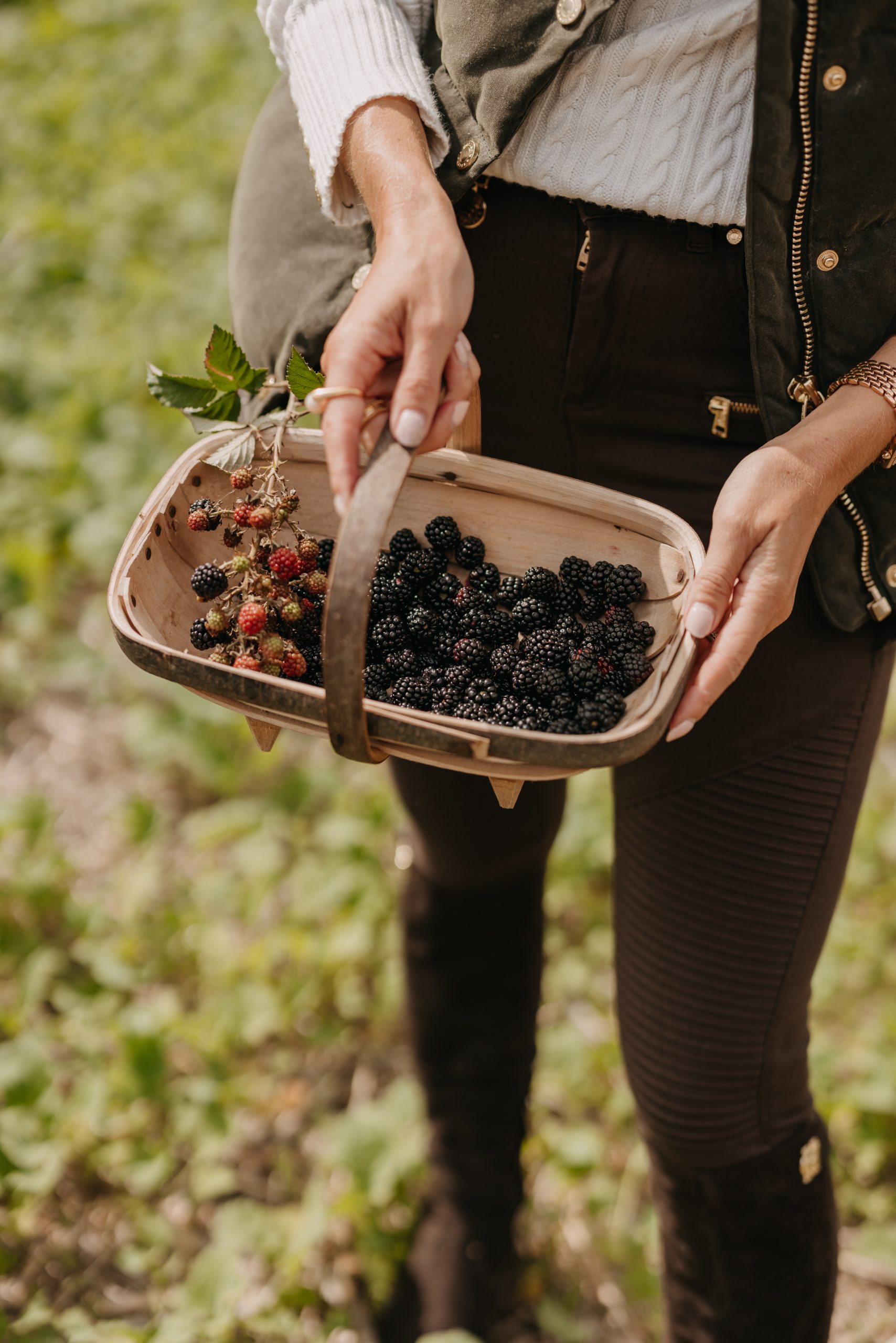Top things to Forage this October
Is there anything more satisfying than heading out on a crisp morning walk, and noticing that the hedgerows are abundant with juicy berries, taking a handful (or two!) home with you, and adding into your crumble to enjoy after your Sunday roast? It’s got to be one of life’s little pleasures. October is an excellent month for foraging here in the UK; there is such choice and abundance – and the slightly cooler temperatures mean that long walks armed with trugs make for the perfect afternoon activity. Today I’m going to share with you my top three things to forage this month, plus some foraging tips and ways to use what you’ve gathered!

Blackberries
One of the most abundant things to forage at this time of year are blackberries! Be quick, as they’re coming to the end of their season but there’s still plenty to be found. Blackberries are a great thing to forage if you are a beginner, as they are really easy to identify. Just look out for a big prickly bush or hedge with a mixture of unripe red berries, and ripe black berries. You may want to wear gloves when foraging blackberries, as the thorns are very sharp.
When you get your blackberries home, give them a good rinse in a colander, and then leave them submerged in cold water for a couple of hours; this will encourage any bugs hiding in your blackberries to flee! Empty out this water then rinse them again.
There are plenty of ways to eat your blackberries. You can of course leave them raw and have them in a fruit salad, or you can put them in a saucepan and reduce them down a bit to create a compote to have on top of yoghurt. Another delicious way to eat blackberries is as part of an apple and blackberry crumble (here’s my recipe!), or as jam or maybe even a delicious sorbet. The possibilities are endless!
Rose hips
Rose hips are small red-orange fruits which grow on wild rose bushes. Rose hips tend to appear once the rose’s blooms have started to fade and die-back, and remain for months; even remaining after the first frost. Be sure to wear gloves to protect your hands from the rose thorns when foraging!
Rose hips have been used for centuries in traditional medicine for their anti-inflammatory and pain relieving properties, as they contain lots of little edible seeds, which are high in various nutrients, such as vitamin A, B5 and vitamin C.
A great way to use rose hips is to create a tea out of them. After gathering your rose hips, wash them in a colander and then split them open to check that they don’t contain any little bugs.
Put a handful of rose hips in your teapot, then simply pour over boiling water and allow to steep for around 10 mins. The flavour of the tea can be improved by adding a little squeeze of honey!


Apples
If you’re lucky enough to have an apple tree (or several) in your garden, then I’m sure you will have noticed that your apples are ripening! A sign that your apples are beginning to ripen, is that some of the fruit has begun to fall off the tree. When checking that an individual apple is ripe, simply pull a good-sized firm apple off the tree and taste it. The sweetness will vary depending on variety, but it should be crunchy and firm. If the apple comes off the branch easily, you know it’s ready to be picked.
There are many things that you can do with a glut of apples; you could of course make a crumble (remember to check out that blog post!), or you could make some applesauce. Applesauce is a great way to use up lots of apples.
All you need to do is peel and core your apples, chop them up into rough chunks and place them in a saucepan with a little bit of water and plenty of cinnamon and nutmeg. Let your apples bubble away for a good 15 mins, or until soft and falling apart. You can mash up your apples if you want a smoother texture. You can then serve the apple sauce with some greek yoghurt and honey for a delicious breakfast, or you could even make an applesauce cake or applesauce muffins!


